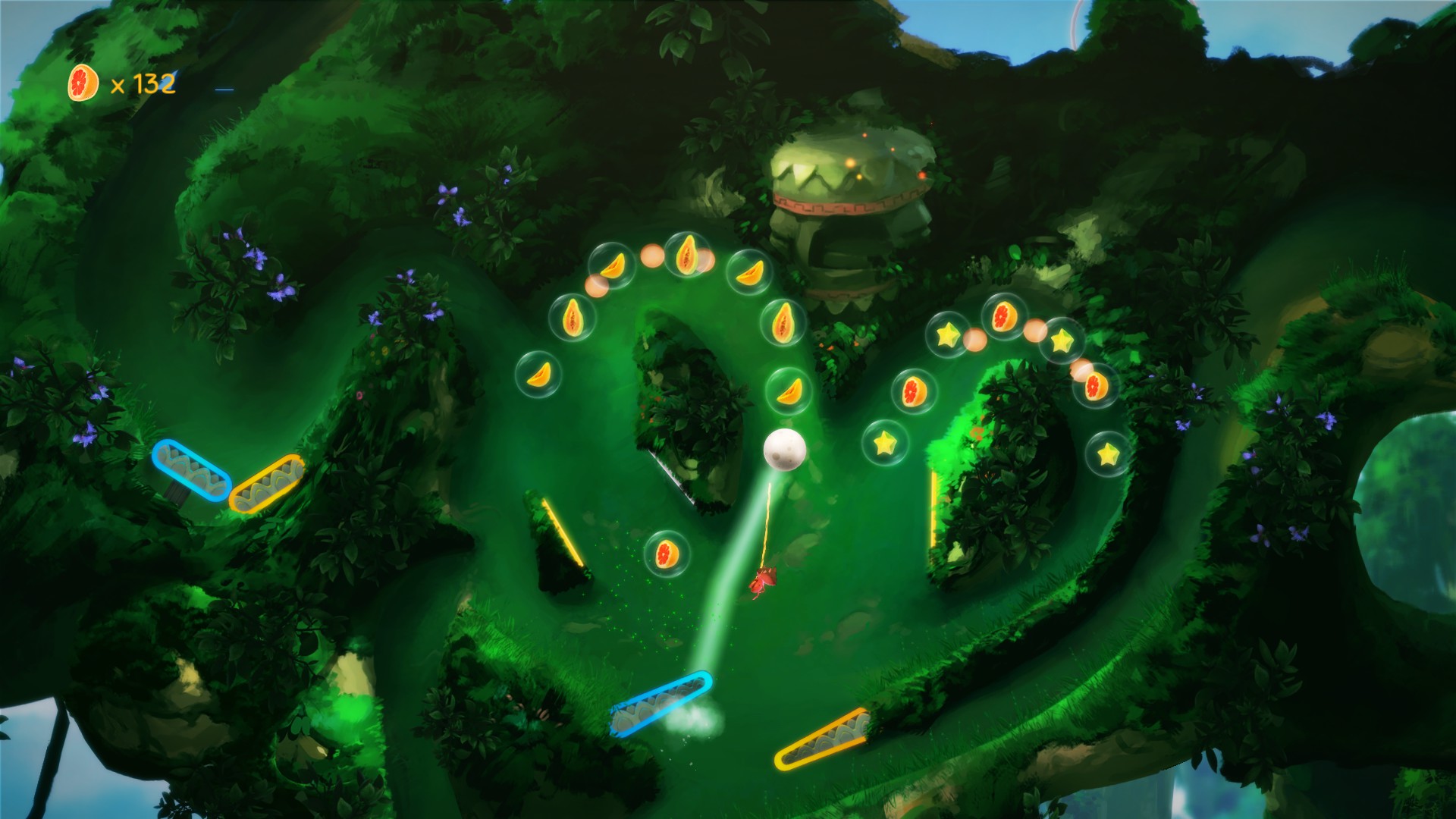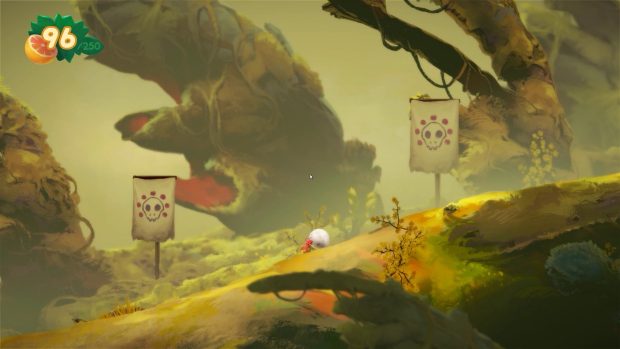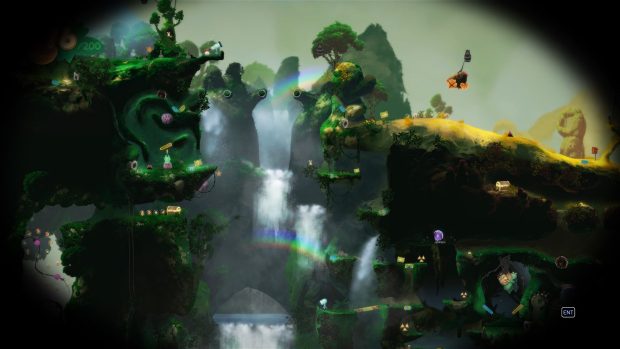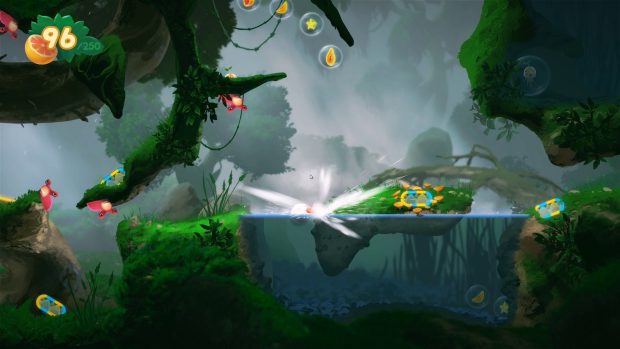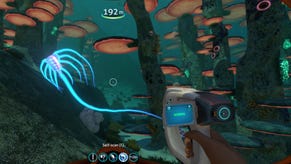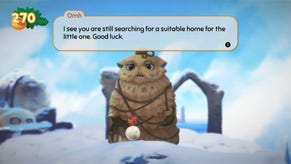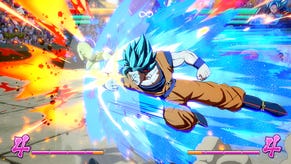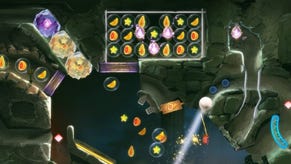How a cup of coffee saved Yoku’s Island Express
A pinball platformer
It wasn’t as if the tester was having a bad time. He was a pinball fan, after all. It’s just that every time he tried to reach for his coffee, the intensity of the game he was testing kept pulling his hand back to the controller. Half an hour later, he finished playing, picked up his cold coffee, and said he’d enjoyed the game. As he contentedly walked away, he couldn’t know that he’d brought about a turning point for its developers, who turned to each other and said, ”Did you see what happened there? This is not the game we want to make, right?”
This was the moment that made Villa Gorilla realise their game had lost its way, the moment that led to the game’s transformation into the smart and charming Yoku’s Island Express, a game that mixes platformers, adventuring in a freely explorable world, and pinball.
In all, Yoku’s Island Express took five years to evolve from a wouldn’t-it-be-cool-if? idea into a final game, a span that demonstrates the challenges of designing something that truly crosses genres in a new way. Not that its developers foresaw what lay ahead, since the fundamental idea of an open-world pinball game is, on its surface, great. Whether you’ve played Yoku or not, you probably instantly got some kind of picture of what that game might be, and that’s why programmer Jens Andersson and artist Mattias Snygg decided to work on it after leaving their jobs at Starbreeze and founding their own studio, Villa Gorilla.
“Getting the pinball parts to be fun was easy,” Andersson tells me. He had a pinball game up and running in a couple of days. “It’s surprisingly fun just to play around with a ball and some paddles, so that was a safety net for what we were doing because we found the fun that quickly.” The adventure side looked pretty straightforward, too, having so many templates to work from, from Zelda to classic RPGs. But as Villa Gorilla discovered, folding the two together would be quite another challenge.
Their first attempt was to make the world a giant pinball table. ”Our original working title was Pin World,” Andersson says. They placed a bunch of flippers down and let the player navigate it as a ball simply bouncing around. ”That sounds interesting but it doesn’t work at all, because you have so little control over the ball. There’s a lot of force going into the ball when you hit it, so it flies off, not necessarily in the direction you wanted. You can’t plan anything and it becomes way too random.”
Attempting to control the ball more closely, they built narrow, anthill-like sets of tunnels for it to run through, but found that they removed a lot of pinball’s pleasure in speed variation, getting a clear shot up a lane, and the satisfaction of seeing it hitting spinners on the way. They realised that they needed speed, but it just wouldn’t work in an open world. “We started to realise why pinball tables look the way they do,” says Andersson.
But while the adventure side of the game was lagging, Villa Gorilla figured the pinball action parts of the game, which featured enclosed ‘tables’ set in the world, were in good shape, and they decided to release a set of them on iOS, an hour-long series of pinball challenges with a boss at the end. They built it, and that’s when they invited testers from their studio neighbour, Helldivers and Magicka developer Arrowhead, including the coffee guy.
”We briefed him on what he was going to play and he said he liked pinball and enjoyed the game,” says Andersson. “But every 30 seconds or so he reached for the cup and then something happened and he had to go back to the controller and react to whatever was happening on the screen, saving the ball from being drained or whatever, and it became comical. Absurd.”
The problem was that in creating a colourful tropical island setting and relaxing music, Villa Gorilla had subconsciously aimed to make a chilled out game, but it was completely contradicted by the action part. “We hadn’t realised how incredibly intense pinball, as a mechanic, is. When we started working on pinball, I had in mind Angry Birds, physics-based gameplay. It’s always fun to play with physics, and we could build on it, but in pinball you’re constantly on edge. I think that’s why pinball tables are very competitive, highscore-driven, super twitchy. They are about reaction and precision and mastery; there’s a little exploration and puzzling but that’s not something they make easy to access, and there are even instructions for it.”
Pinball is, after all, designed to give relatively short play sessions and to be so full of byzantine features and design that tables can hold attention for a long time. “Modern tables are exhaustingly complex and confusing and you need to play a lot before you understand how anything works. To generalise, that’s bad game design but it’s out of necessity because they have this physical setup and they’re limited to the table’s space. We weren’t. So I don’t think we wanted to have that excuse.”
In other words, when they watched that tester fail to drink his coffee, they realised there was more pinball in their pinball adventure than they’d aimed for. They stood at a crossroads. Would they change direction and make it into a challenge-orientated game? Or would they reduce the pace, make a lot more courses, make the pinball areas smaller and possibly less challenging? “That’s the direction we chose, because it was the game we wanted to make, and it fit better with the aesthetics.”
They’d have to dump the iOS game, which was part of the studio’s overall business plan. “And it’s always disappointing when you don’t strike gold on your first try,” Andersson laughs. At the same time, it was the moment at which the project came into focus. It presented a clear problem for the team to address, something that seemed to explain what they’d been seeing in testers’ feedback. “Obviously, any kind of reasoning like that is a simplification, but at some point you need to decide on what problem you’re tackling. Usually in game development that comes too late; you let issues slide because the graphics aren’t there yet and the tester doesn’t appreciate the full experience. But once you’ve agreed on what the problem is, there’s a much easier path to fixing it.”
The change affected every aspect of the game’s design. Before, they saw the adventure and the pinball action as discreet modes, of the player talking to NPCs, getting a quest and travelling to it, and then playing 20-minutes of pinball action sequences before getting a reward and moving on. Now they would break it all up, with smaller tables delivering action sequences of just two or three minutes which were much more integrated in the world.
It was a painful transition: it meant stripping out a lot of the deep challenge that satisfied pinball fans, removing almost all the penalty to draining, and substituting it for adventuring. Villa Gorilla worried that pinball fans were going to be put off. But they stuck to the plan. “We decided to make a game for adventure fans,” says Andersson, explaining that at the time the game was called Pinball Stories. “This is also why we dropped the word pinball from the name; it’s an adventure game with pinball mechanics, rather than a pinball game with adventure elements.”
What made that decision even braver was that the adventure side was still facing a lot of problems. The action element just wouldn’t integrate into the open world, and the cause was the control system. The team had previously decided that Yoku would have super-simple controls: a use button and a left and right which would move both the main character, adorable dung beetle Yoku, and left and right flippers. It was a homage to the three controls that define pinball, it seemed accessible, and it was also a hangover from planning to release a version on iOS, and it was creating a hot mess.
One solution involved the game attempting to contextually switch the player between controlling Yoku and the flippers, another added a toggle between the two. In either case players would be confused as to why Yoku wouldn’t respond in the way they wanted. “We thought we could solve it by being clear in the level design, and we struggled with it for a long time,” says Andersson. What’s more, it was strangling the level design. Yoku was never meant to be able to jump, but not being able to move and control flippers at the same time meant that designer Linus Larsson had to work out all kinds of level design mechanics that would give the player freedom to move, particularly upwards.
“In the end we decided to separate the controls and that’s when things started falling into place,” says Andersson. On a controller, you move Yoku on the stick and control the flippers with the triggers. “At no point did it feel like adding more buttons would be the solution, but in this case it turned out to be. It became much easier to make small pinball puzzles in the middle of adventure areas. It started to feel like we’d actually created pinball mechanics in the world rather than pinball tables spread out in the world.”
And that’s the game today. That tester could never have known that his coffee would have such far-reaching effect, but game design has a knack for pinballing an idea and its creators around before eventually settling somewhere they couldn’t have anticipated.


